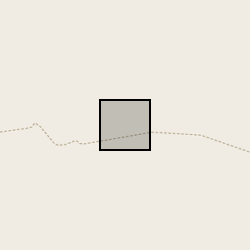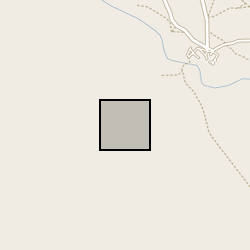dat
Type of resources
Topics
Keywords
Contact for the resource
Provided by
Years
Formats
Representation types
Update frequencies
Resolution
-
This datasets contains Electrical Resistivity Tomography surveys taken in the Makutapora Basin, Central Tanzania, using an AGI SuperSting R8 (STING) resistivity meter. Survey geometry, parameters and coordinates are also included. Full details about this dataset can be found at https://doi.org/10.5285/1998da32-a978-41a4-8a66-81df1e625cca
-

This dataset includes raw point cloud data from repeat terrestrial laser scans (TLS) of rippled surfaces on barchan and dome dunes within the Huab Dune Field, Skeleton Coast National Park, Namibia. This raw data can be used to extract saltation height dynamics as well as 3D ripple data including celerity. As well as the TLS data, additional measurements of the wind speed through a CSAT 3D sonic anemometer or cup anemometer and sediment transport using a Sensit and Wenglor gate sensor.
-

This dataset includes raw point cloud data from repeat terrestrial laser scans (TLS) for a field of protodunes that initiated and developed on a desert gravel interdune surface close to Helga's dune at Gobabeb, Namibia. As well as the TLS data, additional measurements of the wind speed through a CSAT 3D sonic anemometer and sediment transport using a Sensit.
-

Three datasets, ground-penetrating radar, side-scan sonar and sub-bottom profile data (CHIRP), were collected in April and June 2022 from the proximal Skeiðarársandur area (~63.9 N, 17.2 E) and Skeiðarársandur coastline (63.7 N, 17.5 E) that lie at the mouth of Gígjukvísl. Ground-penetrating radar (GPR) data acquired for this project on 15th and 18th April 2022 provide new insights into the sediment architecture of differing depositional environments at Skeiðarársandur, southeast Iceland, including: (i) a recently emplaced jökulhlaup deposit in a large ice-proximal depression, and (ii) the coastal environment of a vast glaciofluvial braidplain. Radar data collected in the ice-proximal depression utilised a 250 MHz Utsi GroundVue (GV) 3, a shielded single-channel bistatic radar system suited to near surface (0-10 m depth). Approximately 30 km of 250 MHz GPR data were collected parallel and perpendicular to the jökulhlaup flow direction. The GPR data from the coastal regions of Skeiðarársandur were collected using a 100 MHz Utsi GV7. The 100 MHz Utsi GV7 is a ruggedised and unshielded radar system with a centre-frequency of 100 MHz and an emitted bandwidth of ~1-160 MHz. The radar system has a maximum time-window of 800 ns and each stacked radar trace is comprised of 256 samples (i.e. one sample every 3.125 ns). Approximately 12 km of 100 MHz radar data were collected at the Skeiðarársandur coastline. File format for the raw data includes .dat, .gps, .gpt and .hdr. Positional (Lat, Lon) data were acquired using a handheld GPS connected via USB to the ruggedised laptop (100 MHz Utsi GV7) or connected directly to GPR control unit (250 MHz Utsi GV3). All GPS data were recorded directly in the Utsi GroundVue software by logging an NMEA string concurrent with radar trace samples (i.e. an XY position for each individual sampled radar trace). Side scan sonar, CHIRP and single-beam echosounding data were collected within a large proglacial lake fronting Skeiðarárjökull (63.5 N, 16.3 W) between 11th to 24th June. Side scan data was acquired using an AquaScan Precision Side Scan Sonar System. During surveys the tow fish was lowered to a constant relative position and depth below the boat hull. This data provides an imaging of the lakebed which is used for qualitative description of lakebed features (filed are .xtf). A hull mounted Sonarmite BTX single-beam echosounder was used to provide depth control which was linked via Bluetooth a hull mounted Leica GS14 (.txt files). Sub bottom data was acquired using Bathy 2010PC CHIRP Sub Bottom Profiler operating at dual frequency (3.5KHz and 10.0KHz). This was towed alongside the boat and used to constrain lakebed depth as well as buried sediment architecture. Ping rate varied based on depth of returns. Raw data was collected at .seg files. All lake survey data is georeferenced using GNSS data from boat mounted Leica GS14 receiving real-time corrections from a base station over a known location.
-

A core scanning dataset from part of the Ellesmere Port-1 drill core that was drilled for unconventional hydrocarbons in 2014. Approximate 40 m of core from the Bowland Shale Formation in the Ellesmere Port-1 (1532.7 – 1663.15 m) was scanned for high-resolution optical images and X-ray fluorescence (XRF) downcore point measurements using the Itrax MC core scanner (Cox Analytical Systems) at the Core Scanning Facility (CSF) at the British Geological Survey. Core scanning was utilised as part of the commission phase of this facility.
 NERC Data Catalogue Service
NERC Data Catalogue Service